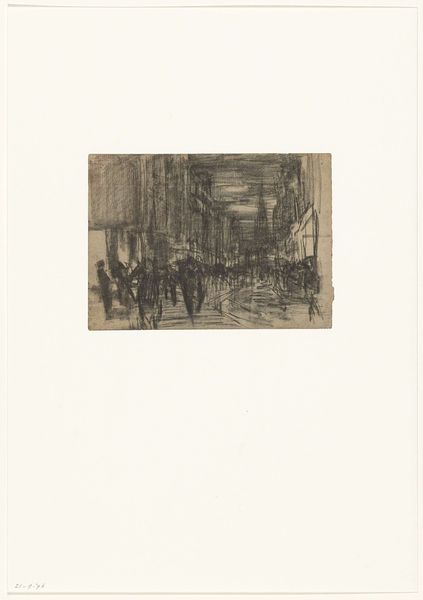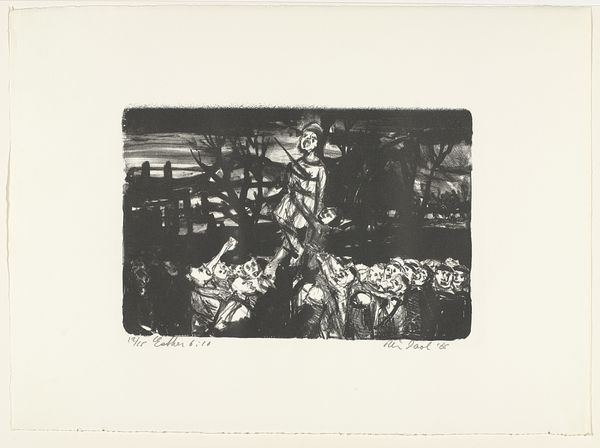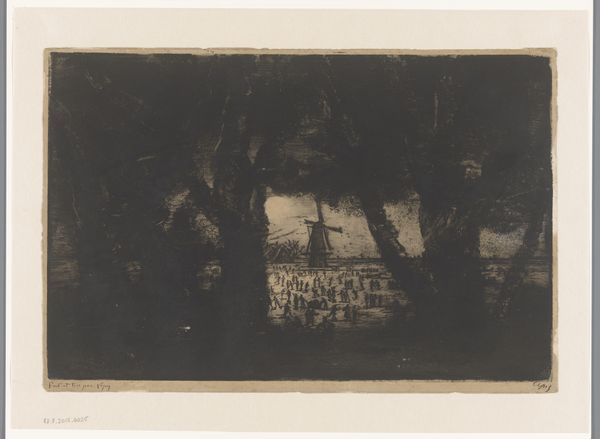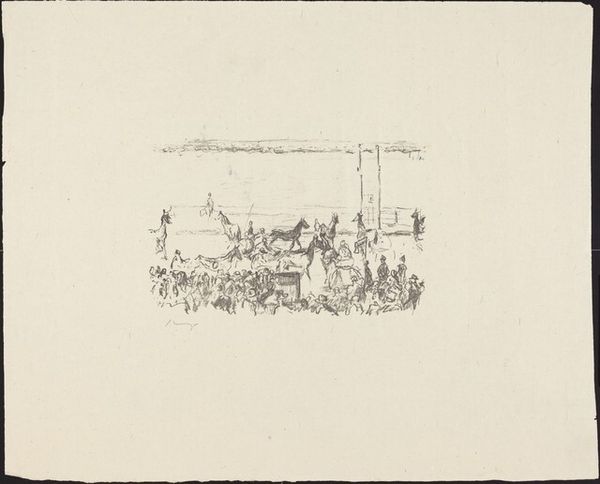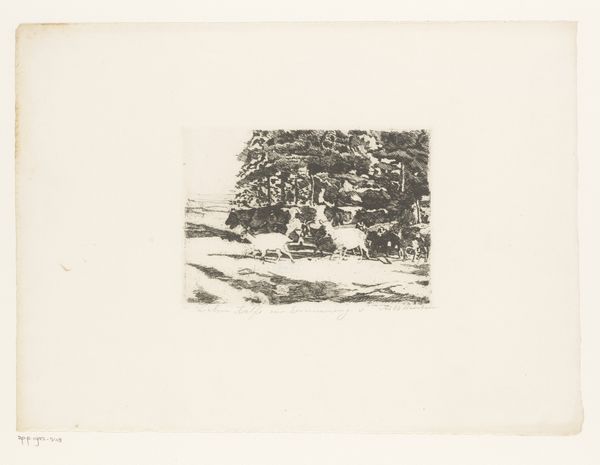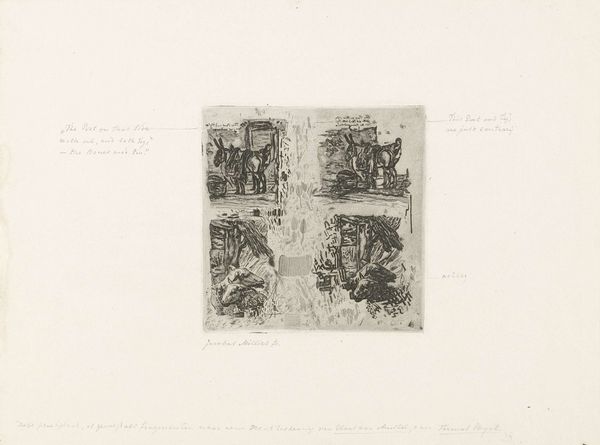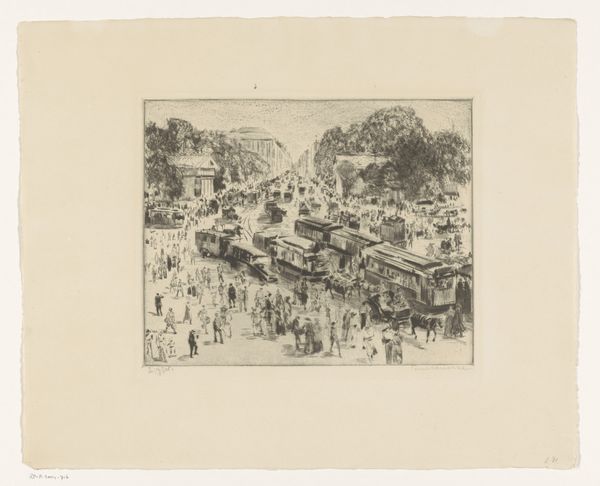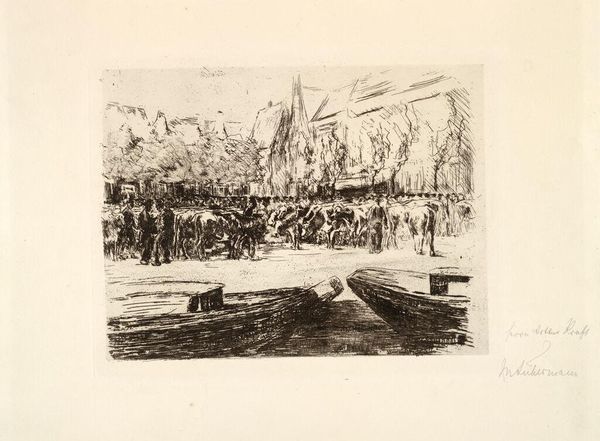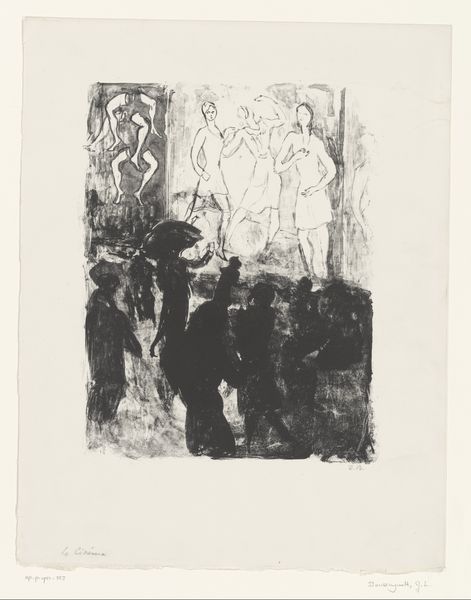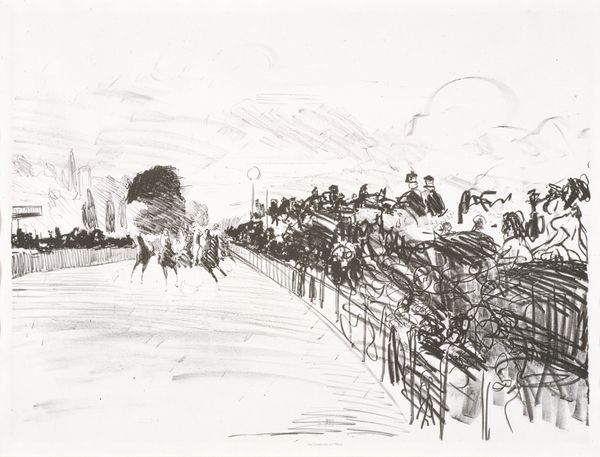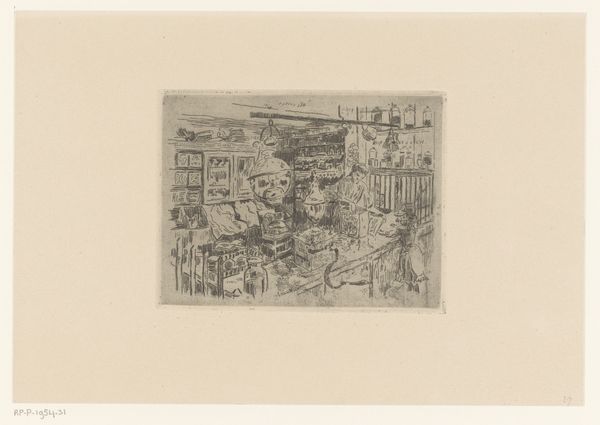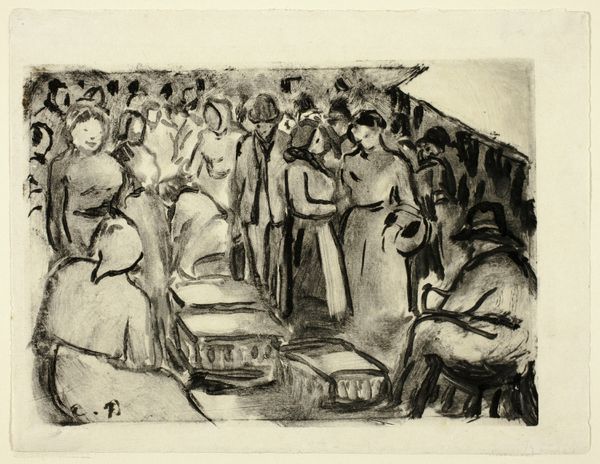
Dimensions: height 141 mm, width 213 mm, height 247 mm, width 327 mm
Copyright: Rijks Museum: Open Domain
Editor: This is Camille Pissarro's "Place du Havre," an etching from 1897. It's incredible how much detail he captured of this bustling cityscape with simple lines. I’m really drawn to how he depicted the energy and the industry of the street using a very raw method of printmaking. What strikes you most about this piece? Curator: It’s fascinating to consider the process itself. Think about Pissarro, immersed in this very "place," meticulously translating its vibrancy onto a copper plate. The etching needle becomes an extension of his hand, recording not just the scene but also the rhythm of labor—horse-drawn carriages, pedestrians, the building of Paris. He’s foregrounding the modern, industrial process. Editor: That makes me consider his choice to create a print rather than a painting. Do you think this artwork can be viewed as documentation? Curator: Precisely! Consider the cultural context: prints were more accessible, disseminated widely. This brings Pissarro closer to those depicted – not just painting bourgeois life for a bourgeois audience, but making a comment about the rise of commerce in cities like Paris. Each impression pulled is a small act of democratization and, if you like, a challenge to traditional hierarchy within the arts themselves. Where does this placement within both the commercial and cultural sector leave us in the interpretation? Editor: So, the printmaking medium allows Pissarro to engage with both the art world and broader society? It re-conceptualizes how the artist functions in relation to these sectors! Curator: Exactly! It challenges this very perception, collapsing high and low art within a rapidly changing world. Consider the labour needed to create these prints. The physical making of each individual artwork pushes it from an act of pure artistic expression to labour. This opens discussions and considerations of who consumes art. Editor: That’s a great point, viewing the print as an object of labor and consumption itself makes me appreciate this art so much more! Curator: Indeed! And that understanding enhances our view not only of the artwork, but of the society that produced it.
Comments
No comments
Be the first to comment and join the conversation on the ultimate creative platform.

